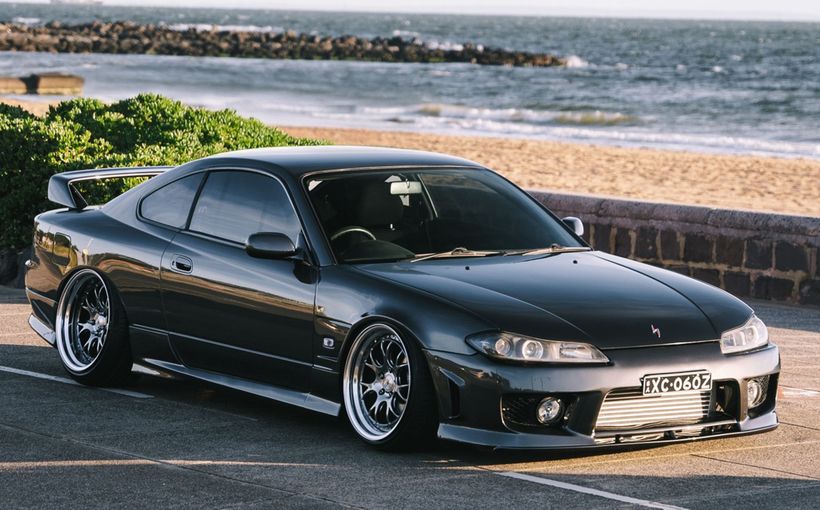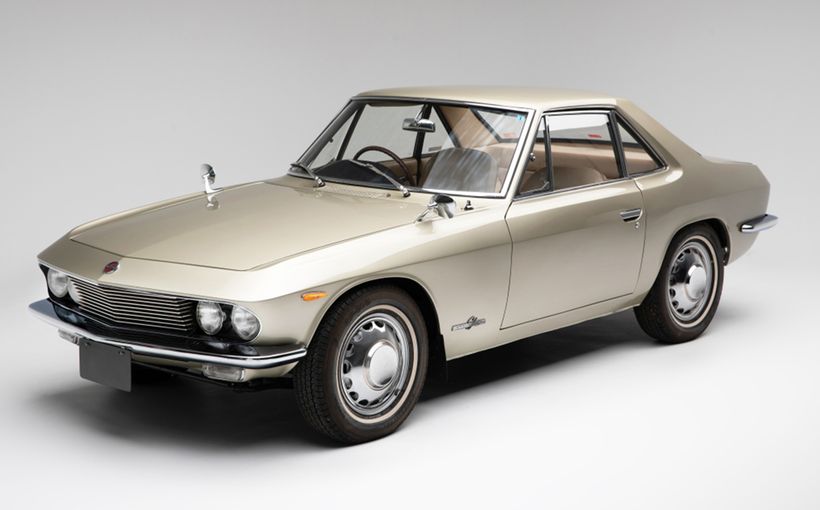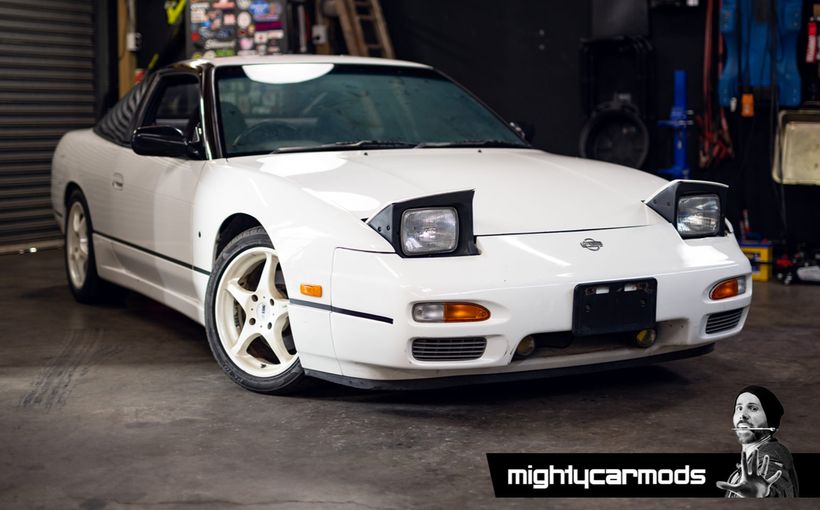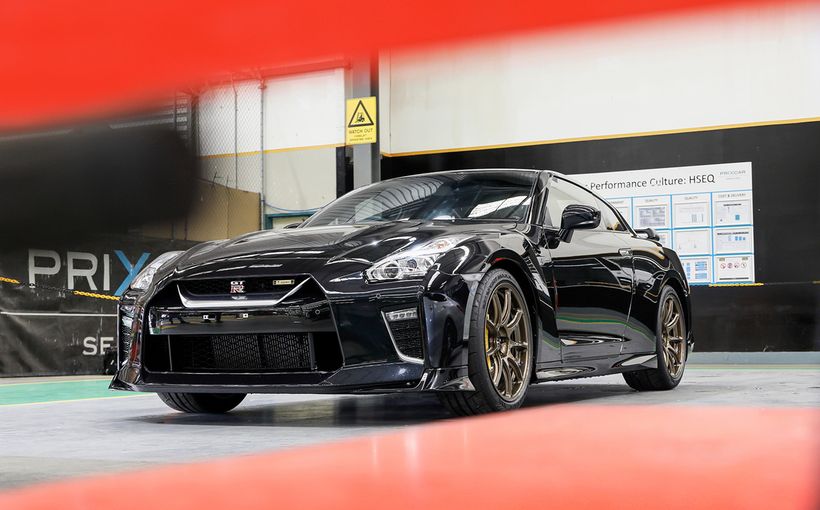Nissan R32 GT-R: Racing First, Road Second
Nothing prepared the automotive world for the Nissan R32 GT-R. Not only was it perhaps the most formidable grand tourer made anywhere in the world regardless of price at the time, but it was the product of the same manufacturer that not so very many years earlier had gifted us with the Datsun 200B and before that the unforgettably lamentable 120Y. (Members of the Shannons Club, can you imagine a greater automotive contrast than between the upright, skinny-wheeled gawky, flimsy, ugly 120Y and the poised, muscular, superbly understated R32 GT-R?)
For decades there has been this divide between Nissan’s greatest sports cars and its often unimpressive mainstream models. Think R32 GT-R and the Maxima, for example. Much of the explanation lies in Nissan’s merger with Prince in 1966, back in the time of the Datsun Cedric.
In the mid-1960s the Japanese automotive industry was coming of age. The Isuzu Bellett was an early example of what was possible. More famous were the shovel-nose Corona, the KE10 Corolla and the giant killing Datsun 1600. The government saw the merging of smaller operators with larger ones as the best way to consolidate the industry and make it internationally competitive.
Prince was one of the small players but one with brilliant focus. It was a more international player than most Japanese automotive manufacturers in 1964. The Prince Skyline GT was beaten only by a single Porsche 904 Carrera GTS. Two of these interesting sedans competed in the Sandown 6-Hour race in 1965, faring quite well.
The Skyline is best understood as a sub-brand permitted to flourish within Nissan. The latest GT-R can trace its ancestry back to the mid-1960s but of all Skyline models, the most famous is that first turbocharged all-wheel drive weapon. It should have been absolutely no surprise to anyone half switched-on to cars that the GT-R was so obviously superior to any other vehicle in international Group A racing. The only way a Commodore was ever going to beat it was after the handicappers nobbled the Nissan!
The R32 GT-R was – like the original E30 BMW M3 a few years earlier – conceived with motorsport success as its first priority: it was a clear case of racing first, road second! Despite this (and again like the M3), the GT-R served superbly in everyday use with a tolerable ride, reasonable room for two in the rear and a large boot.
Does racing improve the automotive breed? You only have to consider these two cars, developed in the context of the proposed World Touring Car Championship to get the answer!
When it was released locally in 1991, the GT-R’s pricetag was $110K. The first batch comprised just 50 cars, which were built in May and June 1991. They were then modified locally to meet the Australian Design Rules – acquiring child seat restraints, a fuel filler restrictor, high-mounted brake light and other such goodies. Fifty more were built in August. Local cars got Blaupunkt sound.
Thirty-seven were in Jet Silver, the same number Red Pearl Metallic and 26 were Black Pearl Metallic. (I’ll have the red, please!)
You might have imagined that those 100 cars would have been snapped up before their wheels touched Australian roads, but this was not the case. In a story called ‘Farewell to Godzilla’, published more than a year after the second batch of GT-Rs had gone on sale, Wheels reported that 63 of them had been sold as brand new cars. Despite its impressive heritage, it does seem that sharing its brand name with the Micra, Pulsar and Maxima did the R32 GT-R no favours.
At $218,910, the Ferrari 348 neatly doubled the ask while failing to match the GT-R on acceleration, let alone dynamics or build quality. But how could bragging about one’s new Nissan compare with saying you’d just bought a rosso Ferrari? Even the standard Porsche 911 cost 50 per cent more than the Japanese car.
(In passing, it’s interesting to note that the ‘Skyline’ moniker was dropped for the R35 GT-R launched in 2007. It seems that Nissan no longer wants to share credit with Prince. There’s no question that the GT-R adds an allure to the brand that even the company’s luxury marque Infiniti cannot begin to rival.)
To understand the marketing problem faced by Nissan Australia with the R32, it’s more helpful to consider the Holden Commodore VN Group A SS, priced at $65K. Indeed, Wheels featured a direct comparison in its July 1991 edition. In theory, the Group A actually had more power than the GT-R – 215 kW versus 205 but in reality Nissan fudged the numbers with 250, maybe 260, being closer to the true output from its twin-turbocharged 2.6-litre in-line six. There was just 20 kg difference in weight with the Holden being heavier at 1,550 kg. The Group A had the advantage of an extra ratio over the Nissan’s five. It also had torque of 411 Nm (at 4,800 rpm), compared with a claimed 355 at 4,400 for its rival.
It is the standing 400 metres that reveals the lie. The Holden took 15.4 seconds, a monumental 1.5 more than the GT-R and, no, the quicker start facilitated by drive to all four wheels does not account for the difference.
In the Wheels comparison test the two cars are driven by racers Jim Richards and Win Percy:
Richards had the last word. ‘In its own right, the Holden is terrific as a GT car. The Skyline is, I suppose, a sports car. They’re both performance cars, but they do it in two totally different ways. You’d have to say the GT-R is really exciting to drive; the Holden is fun.
Nissan engineered the all-wheel drive system to favour the rears. The torque split was 100 per cent biased to the limited slip diff and it was only after the back tyres lost traction that torque was re-allocated forwards to a maximum factor of 50 per cent. The Nissan engineers were inspired by the Porsche 959’s all-wheel drive system but believed that sending 20 per cent of drive to the front wheels all the time contributed to understeer. The GT-R was configured to be pure rear-drive whenever possible and especially when exiting corners. No car in the world could equal its grip, traction and explosive entry onto a racing straight.
As well as the huge positive of drive to all four 16 x 8 alloys (shod with 225/60 rubber), the GT-R also had a so-called Super HICAS four-wheel steering arrangement. At parking speeds the rear wheels steered in the opposite direction to yield a fabulous turning circle of just 11.4 metres but at higher speeds they steered with the front wheels, minimising understeer and helping turn-in.
The GT-R’s cabin was functional in a similar style to the E30 BMW M3 and the E36 (which was still years into the future and much less accelerative than the Japanese car). For your $110K there wasn’t much in the way of luxury with the focus firmly on technology – comprehensive instrumentation, minor gauges angled slightly towards the driver BMW-style, three-spoke leather-bound wheel without airbag.
In some ways perhaps the most instructive comparison is with the 1994 Subaru Impreza WRX, a car which to a large extent stole glory from the aforementioned E36 M3. The same concept of combining all-wheel drive and a turbocharged engine was at the heart of both these compelling 1990s hero-mobiles. It would have been in 1997 that I drove a used R32 GT-R with a dream of buying. This was an immaculate Australian-delivered car, priced at $40K, which seemed like a bargain to me. And then the 10-cent coin dropped: this was the price of a brand new WRX; the trade-off was age versus performance.
As I implied earlier in this story, demand for the GT-R failed to match supply. It now seems astonishing that Nissan Australia succeeded in selling just 63 R32 GT-Rs as brand new cars. The others probably became dealer demonstrators and some may have gone to New Zealand. Although, at $110K the all-wheel drive GT-R was just two-thirds the price of a standard Porsche 911, the brand just did not have the cache.
Now here’s the thing. Those ADR modifications make it easier to distinguish a locally delivered car from a grey import. They came with an owner’s compendium, an idea later adopted by HSV. The compendium itself is surely collectible. It had lists of specialist GT-R dealers, service stations selling 95-octane fuel, the presskit, brochure, three photographs, Nissan pen and a booklet by Jim Richards and Mark Skaife explaining how to drive this wundercar.
The Nissan Australia compliance plate with the code 40ZKBNR32RX should confirm a car as having been locally delivered, but to be sure check all the other differentiators such as the high-mounted rear brake light.
Partly because so few were sold new in Australia, the R32 Skyline GT-R is one 1990s car that is sure to achieve enormous collectibility. As numbers dwindle, this process is likely to accelerate. It does depend on your criteria, but in many respects ‘Godzilla’– the perfect nickname name for the R32 GT-R coined by then Wheels editor, Phil Scott – deserves to be regarded as the world’s best car of the era, and indisputable evidence of how brilliantly racing can improve the breed.




















Comments
4bait
Thats a great looking XR8
I would be pretty happy seeing that in the driveway each day. thanks so much for Showing it.
We have an Eh holden in the shannons show, If you have time to visit the link and click the vote button that would be fantastic
Cheers Andy
https://www.shannons.com.au/club/show-n-...
BeccaBrown
Hi again 😁
I absolutely love your garage.
Wow what an amazing job you have put into your Awesome automobile. A credit to you, one to be very proud to have parked in the garage.
Simply spectacular.
I have entered my 2003 Holden Statesman in the recent Shannon’s Show and Shine competition
If you get a moment you might want to check her out in the Australian category by clicking on the link below.
I’d love for you to give her a vote, before 5pm Thursday 25th June 2020.
That would mean the world to me.
Thanking you so much!
Good luck if you’re entered, happy motoring and stay safe everyone!
Please click on the link below and the hit the green vote button on her entry.
TIA Bec
https://www.shannons.com.au/club/show-n-...
Thank you so much If you have already voted for her!!!